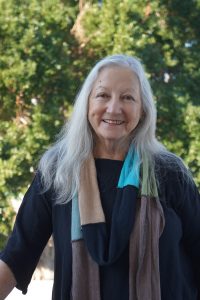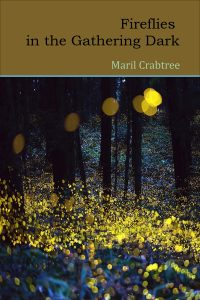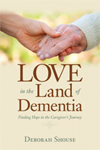Caregiving
Finding Meaningful Memory Care
“I feel like I’ve been on extended vacation,” Ron’s father Frank said, after his first day in a memory care facility. “Today was really enjoyable.” Ron and I just melted with happiness. We had visited many facilities, with the hope of finding meaningful memory care with great activities. Frank couldn’t have said anything nicer.
It’s quite an emotional journey, finding meaningful memory care. So many of you have asked me for tips. I am re-posting the great ideas from my friend, Dr. El, Dr. Eleanor Feldman Barbera, PhD, author of The Savvy Resident’s Guide and a columnist for McKnight’s Long Term Care News.
Finding Meaningful Memory Care With Engaging Activities
“Remember, everything is an activity,” says Dr. El. She encourages care partners to seek a community with a dedicated memory care program, so people with cognitive impairments can benefit from all the offered activities.
“In a specialized unit, staff are trained to work with people who are living with dementia,” Dr. El says. “This training can help people enjoy greater independence.”
In one facility, a lady liked to wander into people’s rooms and take their jewelry. Rather than getting upset, the staff understood, framed this as “shopping,” and simply returned the jewelry.
“These kinds of insights create a calmer, slower-paced environment that reduces agitation,” says Dr. El.
Seek Structure, Soothing and Variety
Here are some things to look for, as you visit facilities:
Is there a home-like atmosphere?
Is there a structure to the day?
Are there calming activities scheduled for change of shift? Changing shift is disruptive, so some communities orchestrate a teatime with music or other soothing activities.
You’re also making sure there are a variety of activities throughout the day. These should include:
Outdoor Time: Taking people outside makes a big difference in mood, appetite, and the sense of connection to the world.
Movement: Exercise is an important component to health.
Nurturing: Look for activities that make people feel confident and good about themselves, such as spa days or activities that incorporate skills such as cooking, art, or gardening, modified to provide a “success” experience.
Engagement: Being engaged, rather than just entertained, inspires a sense of purpose, creativity, and social connection.
Kindness is Everything
“Meet with the recreational therapist,” Dr. El suggests. “Is she compassionate and caring? Are the staff members kind? You can have all the activities in the world but if they’re not done with gentleness and humanity, they won’t work.”
Let the recreation director know what your loved one likes to do and see if she can adapt the activity.
Stay Involved
Visit as often as you can and attend activities together. Encourage friends and relatives to join you. Meet other residents and get to know the families and staff.
“You can act as a connector to create friendships, so residents engage in their own interaction, even when you aren’t there,” Dr. El says.
For more information, visit Dr. Eleanor Feldman Barbera, PhD, http://www.eldercarewithdrel.com,

Treat yourself to Dr. El’s book, The Savvy Resident’s Guide
How to Create Better Connections in the Land of Dementia
Ron and I both love helping people create better connections in the land of dementia. We are enjoying the second year of our meaningful Movies and Memories film series. Our next free movie events (and I say “events’ because there is so much more than just sitting and watching a film) are September 10 and November 5. Please tune into Kansas City Live on KSHB-TV on Thursday, September 7 during the 10:00 hour, for additional details.
I was delighted to be featured on Mike Good’s Together in This recent podcast. Mike is a gifted interviewer, with an authentic voice and a true commitment to help people stay better connected. I so enjoyed our time together and wanted to share the interview with you.
Recently, we have been connecting through creating laughing classes for caregivers, elders, people who are living with dementia, and others. We love going around to care communities and laughing with community members, family, and staff. Our next public laughter presentation is at the Landon Center, on October 18 at noon. It’s free and open to the public. If you’re in the Kansas City area, please come laugh with us. It’s great fun!
I was honored to have a book excerpt featured on Maria Shriver’s website. Maria does amazing work and her new book, Color Your Mind, is a visual and information treat, full of inspiring ideas.
I was thrilled when a story of mine was accepted by Chicken Soup’s The Dog Really Did That? The story honors Ron’s mom, Mollie, and her love for a dog named Biscuit. If you have a chance, read my story and so many other great essays in this inspiring book.
Finally, thanks to Mary Anne Clagett of Creative Forecasting, a publication for Activities Professionals. She is featuring a review of Connecting in the Land in their November issue. The publication brims with interesting ideas for creative and meaningful activities.
There are so many ways to Create Better Connections in the Land of Dementia, and as you can see, there is power in sharing stories, laughter, and the arts.
Let’s Go to the Movies: A Dementia-Friendly Series
“Let’s go to the movies,” my dad often said to my mom. My parents would have loved our Movies and Memories series, now starting its second year. We are excited to announce our partnership with the Kansas City Boys Choir and the Kansas City Girls Choir this season. Some of their outstanding performers will be joining us at each event.
Already, the series is making a difference in a variety of ways. Additional libraries in Missouri and other states are interested in implementing the program. And our library is so committed to becoming more dementia-friendly that it is having special training for its staff, courtesy of the Alzheimer’s Association — Heart of America Chapter. Please share this invitation with those who would enjoy it. And if you’re in the Kansas City area, please join us. It’s free and open to all. Let’s go to this movie series!
“Stamp” out Alzheimer’s
 Do your part to “Stamp our Alzheimer’s.” For twelve years Lynda Everman was a silent caregiver. Her husband, Richard, was diagnosed with Mild Cognitive Impairment in 1997; in an effort to preserve his dignity, she told few people what they were going through.“We were both introverts and private people,” Lynda says. “My husband and I were a team, taking care of each other, moving through a situation that was too painful to address in public.”
Do your part to “Stamp our Alzheimer’s.” For twelve years Lynda Everman was a silent caregiver. Her husband, Richard, was diagnosed with Mild Cognitive Impairment in 1997; in an effort to preserve his dignity, she told few people what they were going through.“We were both introverts and private people,” Lynda says. “My husband and I were a team, taking care of each other, moving through a situation that was too painful to address in public.”Here’s where you come in.
Enrich Life by Adapting Hobbies
We all want to be engaged in purposeful and fun activities. When we enrich life by adapting hobbies, we help people living with dementia stay engaged in activities that are meaningful and interesting to them.
Discover What’s Most Important
To adapt hobbies, ask yourself: What is most important about the activity?
For example, for gardeners, is it the feel of their hands in the soil? Is it producing flowers or harvesting vegetables? Is it having something to take care of?
For those who like quilting, is it the finished product or making the squares? Is it the companionship with other quilters? Or the texture and colors of the fabric?
For those who like cooking, is it the measuring and stirring? Do they enjoy the aromas and textures of the ingredients? Is it the joy of preparing something that thrills others? Or is it the simple pleasure of tasting delicious foods?
With those answers, you can support the aspects of the activity that really resonate. You can enrich life by adapting hobbies.
Here is a story about adapting your attitude.
Embrace the New News
That Tuesday morning, she walked into the kitchen and saw her husband, relaxed in his chair, drinking his morning coffee, and reading the newspaper. He loved his morning ritual and everything was as it always had been. Except now he was holding the newspaper upside down. At first, she was upset, angry that dementia had robbed him of reading. As she battled with her feelings, he hummed, a sign he was happy and content. She took a breath and realized, she too should be happy and content.
Go for the Greens
I love this story from Mara Botoni, author of When Caring Takes Courage. Here’s how she kept her grandfather, who was living with dementia, involved in his golf game. For a time, he walked the golf course and played with empathetic friends. When he could no longer play, he liked being driven around the course, enjoying the scent of freshly mown grass, the vistas of rolling green lawns, and the thwack of a well-hit ball. Later, at home, the family set up an indoor putting green and watched golf tournaments on television with him.
Deborah Shouse is the author of Connecting in the Land of Dementia: Creative Activities to Explore Together and Love in the Land of Dementia: Finding Hope in the Caregiver’s Journey.
A Better Visit in the Land of Dementia
I’m always amazed at how a change of perspective can widen your heart and open your eyes. This is a story of how my friend helped me look at my mom in a new way and gave me me a better visit in the land of dementia.
Many weekday afternoons I stole away from my workday for a little rendezvous. I drove far into the southern part of the city.
There I hurried through the lobby, walked swiftly down the corridors and until I reached the locked door. There I punched in a secret code that allowed me into the inner sanctum, the memory care unit where my mother lived.
Walking into my mother’s room was always a surprise: I never knew who would greet me; a sweet curly-haired woman wearing a pink sweat suit and looking quietly compose? An anxious haggard woman who bent to pick up invisible lint on the floor and jabbered with invisible creatures lurking in the corners? Or an exhausted former beauty, lying across the single bed wearing an orange pullover and an adult diaper? My task was to appreciate every aspect of my complicated mother and whoever she was at the moment.
When my friend Maril asked, “Can I go with you to visit your mother?” I felt like a flutter of angels had gathered around me.
“Really?” I asked. “You want to see Mom with me?”
She did. I prepared her for our visit, describing Mom’s various moods. Maril did not seem shocked, worried or afraid. I told her about walking into the sometimes chaotic energy of the locked Alzheimer’s unit. She simply nodded as if this were an ordinary occurrence, which, for me, it was.
The day of our visit I felt lightness inside; I was eager to share my secret world with my friend.
Throughout the years, Mom has always been gracious with my friends and that day was no exception. Mom was sitting at a table in the dining room with a magazine in front of her. She looked pretty and serene and she smiled when we came in. We sat next to her and Maril took her hands.
“How are you Fran?” Maril said, looking into my mother’s eyes.
“Well I you know the scatter of it all,” my mother answered.
“I do know the scatter of it all. How are you getting along here?”
“Like a diamond in the sky,” my mother said.
As I listened to my mother and my friend talk, I was so moved.
“Your mother is really something,” Maril said as we left the home. “I enjoyed seeing her. I’d like to go again with you sometime.” I was proud of my mother’s poetic and eccentric answers, proud of the way she engaged in the conversation. And I was grateful that my friend was able to appreciate my mother, listen to her words and intuit their deeper meaning.

 The visit was a huge gift for me. Seeing Maril engage with and appreciate my mom just as she was reminded me of the depths of my mother’s many talents and facets. This knowledge later helped me get through those moments when my mother seemed faraway or lost. My friend reminded me that there are so many ways to carry on a good conversation. All you need is attention, intention and love.
The visit was a huge gift for me. Seeing Maril engage with and appreciate my mom just as she was reminded me of the depths of my mother’s many talents and facets. This knowledge later helped me get through those moments when my mother seemed faraway or lost. My friend reminded me that there are so many ways to carry on a good conversation. All you need is attention, intention and love.
Deborah Shouse is the author of Connecting in the Land of Dementia: Creative Activities to Explore Together and Love in the Land of Dementia: Finding Hope in the Caregiver’s Journey.
Dementia Journey: Planting Seeds and Growing Engagement
I met so many inspiring people when I was writing Connecting in the Land of Dementia. Activities director Lori Condict, from Chestnut Glen Assisted Living by Americare in St. Peters, Missouri, created an inspiring program focused on planting seeds and growing engagement. Whether you’re a family care partner or you work in a facility, you’ll learn from Lori’s project.
Planting Seeds and Growing Engagement
“Mable, I could use your assistance this morning,” Lori Condict says. “The tomatoes are ripe and I need help picking them. Are you available?”
Mable nods. Lori waits while Mable puts on her gardening hat and gloves. Then they join others from the memory care community outside in the garden.
“What are you thinking about Mable?” Lori asks, handing her a small bucket.
“My first bite of summer tomato.”
“Let’s try one of these,” Lori says. She knows that Mable and her husband used to have a vast vegetable and flower plot.
Mable plucks a cherry tomato off the vine and pops it into her mouth. Slowly, she picks another and plops it in her bucket. Others in her community are also harvesting the tomatoes.
“We’ll be sharing our vegetables with the food bank, so others less fortunate will enjoy this fresh produce, “Lori reminds her.
“That’s good,” Mable says. “Everyone needs to taste these tomatoes.”
Mable lives in the memory care unit in Chestnut Glen Assisted Living by Americare in St. Peters, Missouri. She is one of the 15 residents working on the Operation Riverfront gardening project. Lori, the activities director in the care facility, is a city girl. But she knew she’d have plenty of help from her residents. She also knew that they would thrive knowing they had a purpose and were giving back to their community.
Seeding Empowerment
Lori started simply, with a bunch of tomato, cucumber, squash, peppers, and pea seeds, pretty and colorful vegetables that would remind residents of their home gardens. Lori had tasks for all abilities: some held little containers while another filled them with dirt; some tamped in the seeds and others labeled them. Lori provided everyone with special hats and gloves.
While they worked, they reminisced, talking about favorite tomato dishes and summertime activities.
Sharing the Bounty
When it was time to share with the local food pantry, the residents did the harvesting and packing.
“We had planters, pickers, packers, counters, and a watering crew,” Lori says. “People who’d been depressed and disengaged got involved. Through working on the project, they felt alive and useful; they had a purpose.”
Want to grow plants, connections, and a sense of purpose? Here are some tips:
- Select flowers, plants, vegetables, and herbs that are pretty, colorful, easy to grow, and have some meaning to the person living with dementia.
- Create small tasks that are interesting and pleasurable.
- To increase the sense of purpose, find ways to share blooms, cuttings, vegetables, and herbs with family, friends, and community members.
- For those who can’t go outdoors, bring the plants to them in containers.
- Infuse the work with opportunities for conversation.
Deborah Shouse is the author of Connecting in the Land of Dementia: Creative Activities to Explore Together and Love in the Land of Dementia: Finding Hope in the Caregiver’s Journey.
The Marvels of Misplacing
“I don’t know where my glasses are,” Mom tells me. I bite my lip; she’s been misplacing things all day. We are supposed to be spending a day drawing and painting, trying to connect mom with the artist she used to be. We are supposed to bake cookies together and look through magazines. But I’ve been spending much of the time crawling around, looking under the sofa and chairs and between the cushions for the disappearing glasses.
“Let’s make our cookies. You won’t need your glasses for that,” I say.
“I need my glasses.”
As I search, I wonder when it became a drudgery instead of a joy to find things. One of my favorite childhood games was Hide ‘N Seek. I loved being the Seeker, loved the surprise of finding someone in a tucked away, mysterious place. I had a special trick I used when I was “It.” I would close my eyes and say, “If I were Dan, where would I hide?” Then an image floated into my mind and I’d race to the hiding place. Half the time, I was right.
Do I still have “it?” I close my eyes and think, “If I were Mom’s glasses, where would I be?” The refrigerator comes to my mind. I rush into the kitchen and fling open the refrigerator door, only to see the usual chaos. But I’m hungry, so I reach for an apple. Behind the fruit is a pair of reading glasses, sprawled across the shelf.
Triumphantly, I take the glasses to Mom.
“These feel nice,” she says.
Not only has my mother reminded me of the importance of creativity, curiosity and play, but she also discovered a great summer time tip: chill your glasses and cool off your face.
Deborah Shouse is the author of Connecting in the Land of Dementia: Creative Activities to Explore Together and Love in the Land of Dementia: Finding Hope in the Caregiver’s Journey.
Boost Energy with Savvy Smoothies
Ever wish you could have an instant jolt of muscle and energy like Popeye did when he gulped down his can of vitamin-rich spinach? I asked renowned cookbook writer and fiction author Judith Fertig for some easy and healthy ways for us all to boost energy with savvy smoothies. Judith agreed to share a few of her favorite quick, refreshing, nutritious, and delicious recipes.
Secrets for Succulent Smoothies, From Judith Fertig
Smoothies can be a caregiver’s caregiver. These blended drinks offer big nutrition in a small package, can be made in minutes, and make us feel like we’re doing something good for ourselves.
Smoothie recipes are like blueprints—they’re meant to be changed to follow what’s fresh, what’s in season, or what we feel like drinking. Berries, greens, melon, tomatoes, avocado, cucumber, celery, carrots and stone fruits like peaches and mangoes add antioxidants, fiber, vitamins and minerals. A tablespoon or two of healthy fats such as milled flax seeds, hemp or nut butter can add richness to the flavor, while providing omega-3 fatty acids necessary for complete nutrition. For the finale, add a touch of sweetness from fruits, maple syrup, agave nectar or stevia, or fresh lemon or lime juice.
The best way to mix a smoothie is to start with either a liquid or an ingredient with a thicker consistency, like yogurt, placed in a blender or high-powered smoothie mixer. Next, add the desired fruits or vegetables and flavorings. It’s better to start on a slower speed while holding down the lid tightly. Once everything is blended, increase the speed to high to achieve a more velvety texture. If the smoothie is too thin, add more frozen fruit or ice.
Smooth-fleshed fruits like mangoes, bananas, ripe peaches and nectarines blend more easily to a silky finish than do fresh berries. Tender, baby greens such as spinach, kale or chard virtually disappear within a smoothie; if using mature, rather than baby greens, cut out the stems unless the blender or mixer is extremely powerful.
Blending enough ingredients for two smoothies can yield a leftover serving to store in a covered glass jar in the refrigerator. To reactivate the full taste later, just turn over the jar and give it a good shake to re-blend the ingredients.
Brilliant Green Smoothie
Yields 2 servings
2 cups water
4 cups baby spinach
2 cups chopped butter lettuce, escarole, or romaine
1 large banana, cut into chunks
The juice of a lemon
Combine the water, spinach, lettuce, and banana and blend using low to high speeds until smooth. Add lemon juice and blend again.
Peachy Watermelon
Yields 2 servings
2-3 cups watermelon, seeded
1 cup low-fat vanilla-flavored dairy or coconut yogurt
1 cup frozen strawberries
1 fresh peach, peeled, pitted, cut into chunks and frozen
Combine all ingredients and blend from low to high speed until smooth.
Cool as a Cucumber Smoothie
Yields 2 servings
1 cup apple juice
1 cup sliced sweet apple
¼ cup applesauce
½ cup sliced carrots
½ cup cucumber, peeled and sliced
2 cups ice
Dash of nutmeg or cinnamon (optional)
Combine all ingredients and blend from low to high speed until smooth.
###
Sometimes after I eat something truly healthy, such as s savvy smoothie, I develop a craving for something darkly chocolate. If you have such cravings, you’ll want to buy Judith’s cookbook Bake Happy. And if you crave something delicious to read, try her fiction series, The Cake Therapist and The Memory of Lemon.
For more great gourmet ideas, visit her website: www.alfrescofoodandlifestyle.blogspot.com/
Deborah Shouse is the author of Connecting in the Land of Dementia: Creative Activities to Explore Together and Love in the Land of Dementia: Finding Hope in the Caregiver’s Journey.
Boost Body and Spirit with Nature: Tips for Care Partners and People Living with Dementia
“I can’t imagine a world where I couldn’t enjoy outdoor pleasures whenever I want,” said Mike Good, founder of Together in This. As I listened to Mike’s Podcast on the power of nature, I thought of my mother. Mom taught me to love birds, flowers, trees, and mountains. Even in her last days, a yellow rose could catch her attention, inspire her to reach out and touch its tender petals. This simple activity helped boost body and spirit with nature.
There’s increasing research that backs up what I observed with my mom. Strolling or wheeling around a courtyard, sitting on a bench underneath an apple tree, observing a bunny nibble clover, watching someone water a tomato plant — all these outdoor events enhance physical and mental well-being, including improving sleep cycles and reducing agitation.
Garuth Chalfont, PhD, American Society of Landscape Architects, and author of the book, Dementia Green Care, says, “Nature-oriented activities, such as growing and caring for plants, promote brain neuroplasticity and help us dream, experiment, learn and create. Research shows that nature-based activity is therapeutic and is essentially a form of treatment for dementia symptoms, helping a person remain at home longer.” Garuth is internationally known for his work in designing, building, and researching gardens that benefit people with dementia.
Mike Good says, “The feel of sunshine on my face, the smell of flowers blooming, the sounds of kids frolicking in the park — while these pleasures naturally occur for most of us, millions of people who are living with dementia find themselves unable to enjoy such routine pleasures without assistance”
Taking a loved one who is living with dementia outdoors can be stressful, but staying cooped up inside is hard on both of you. Here is a bouquet of nature’s benefits, inspiring for both people who are living with dementia and those who care for them.
Relaxing outdoor activities
Gardening activities, such as container gardening, planting seeds, watering, weeding, harvesting, sharing flowers and fruits and vegetables
Walking around the yard or strolling through the neighborhood
Discussing people and dogs walking by, asking open-ended questions, such as “Where do you think they’re going?”
Installing a small fountain and a bench, then sitting and enjoying the sound of the water
Sharing a picnic lunch
Drawing or painting outdoors
For those who enjoy projects, have tools visible and available. For a woodworker, set out wood and sandpaper. For a frail gardener, have a container of herbs. For those who like to tidy the yard, offer gardening gloves and a bucket to deposit leaves and twigs.
Bringing Nature Indoors
Garuth says, “If going outdoors is not feasible, look around your living quarters and ask, ‘Where are the best outdoor views? Where is the most sunlight?’ You may need to cut down a light-blocking bush or move a sofa, but you will discover areas where you and your partner can enjoy sitting and watching nature.”
Open the curtains and blinds to let in light.
In temperate weather, open windows and welcome fresh air and birdsong.
Green up the room with houseplants.
Bring in flowers or herbs to stimulate the senses.
Create a comfortable viewing area, with feeders, so you can enjoy watching birds and squirrels.
Gather potting soil, water, and green bean seeds. Spoon the soil into small pots or into an empty egg carton. Place one seed in each and cover with soil, then pour in a little water.
“Touching soil and planting may trigger memories and ideas from earlier years,” Garuth says.
Gathering flowers, walking a tree-lined sidewalk, plucking a cherry tomato off its vine, watering a house plant, gazing out the window at chickadees — these meaningful natural activities increase pleasure, relaxation, social interactions, and sensory stimulation.
For more information about Mike Good and his work, visit http://togetherinthis.com/ and view his nature video at https://www.youtube.com/watch?v=P7KWaSUHVQo
To learn more about Garuth’s work, visit http://www.chalfontdesign.com/ and http://www.chalfontdesign.com/lifework.html
Deborah Shouse is the author of Connecting in the Land of Dementia: Creative Activities to Explore Together and Love in the Land of Dementia: Finding Hope in the Caregiver’s Journey.




